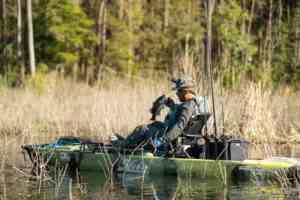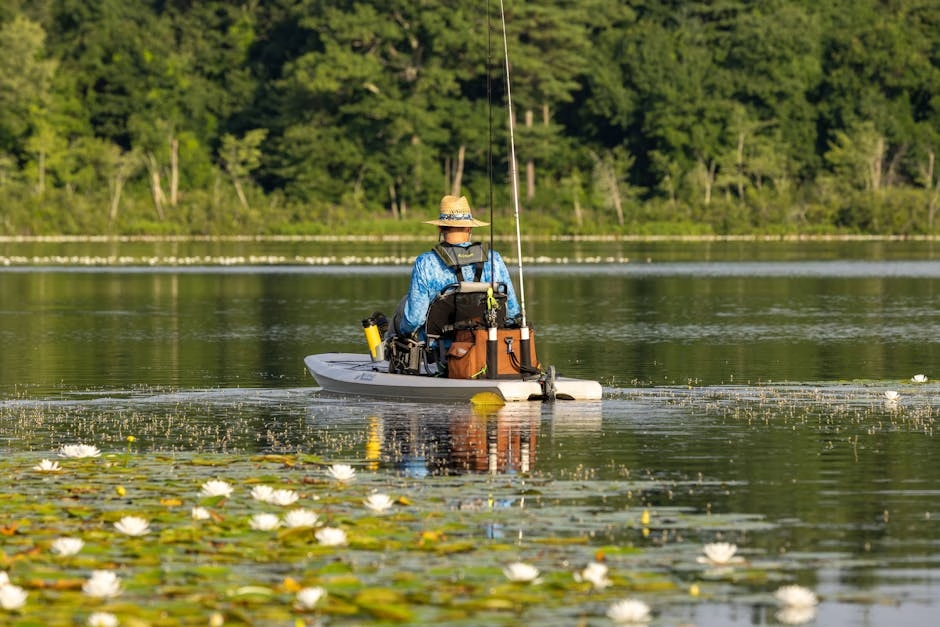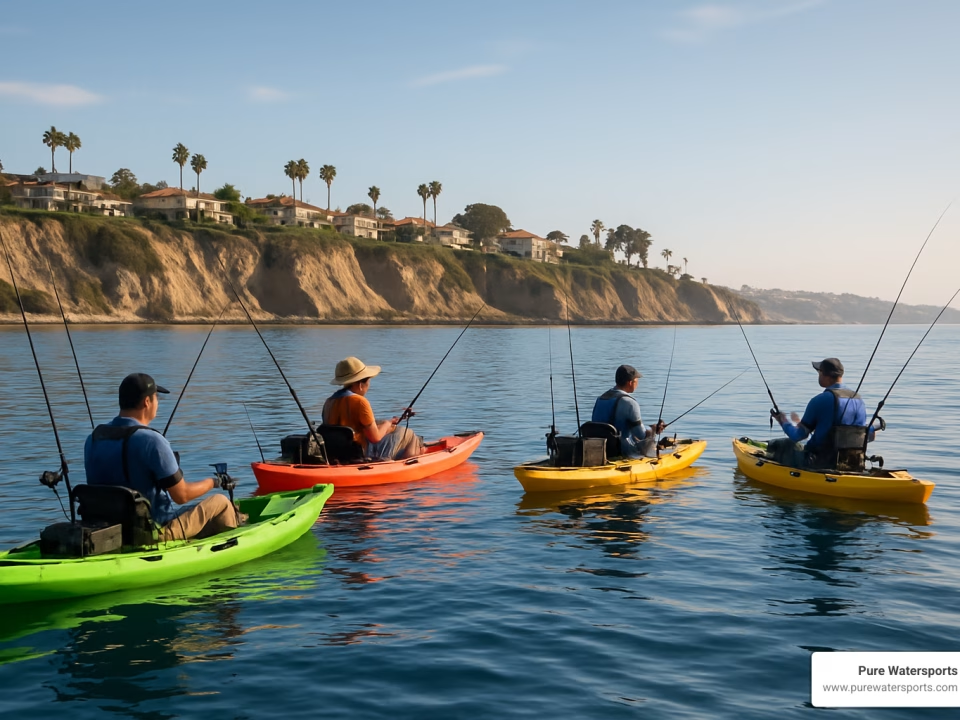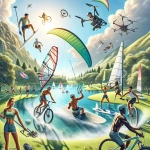
Pure Water Sports Adventure Guide: Best Orange County Activities
May 31, 2025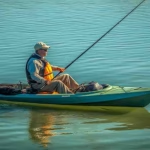
Gone Fishin’—Your Ultimate Guide to Fishing Kayak Rentals
June 10, 2025Fishing Kayak Accessories: 10 Essential Power Picks 2025
Why Customizing Your Kayak Makes Fishing More Productive
Fishing kayak accessories are essential add-ons that transform a basic kayak into a specialized fishing platform. Here are the most important accessories every kayak angler should consider:
- Safety Equipment: PFD (life jacket), whistle, 360° visibility light
- Anchor System: Anchor trolley, 3-3.5 lb grapnel anchor, quick-release mechanism
- Rod Management: Adjustable or flush-mount rod holders
- Storage Solutions: Tackle crate, dry storage bags, gear tracks
- Electronics: Fish finder, waterproof phone case, battery system
- Landing Gear: Floating net, fish grips, bump board
When I first started kayak fishing, I learned the hard way that an unmodified kayak leaves you constantly juggling gear, fighting the wind, and missing fish. As one experienced angler put it, “Suffice it to say that kayaks are arguably the most customizable watercraft money can buy.”
The beauty of fishing from a kayak lies in its stealth and accessibility to spots larger boats can’t reach. But without the right accessories, you’ll spend more time managing your craft than actually fishing. A properly outfitted fishing kayak keeps your rods secure, your position stable, and your catch fresh – all while maintaining the mobility that makes kayak fishing so appealing in the first place.
Modern fishing kayaks come ready for customization with mounting tracks, scupper holes, and attachment points designed specifically for accessories. Whether you’re fishing freshwater lakes or venturing into saltwater, the right gear makes all the difference in your comfort, safety, and success on the water.
I’m Gregg Kell, an avid kayak angler with over a decade of experience testing and reviewing fishing kayak accessories for freshwater and saltwater applications. My approach focuses on practical, field-tested solutions that improve your time on the water without breaking the bank.

Essential “Fishing Kayak Accessories” You Shouldn’t Launch Without
Let me tell you something I’ve learned after helping hundreds of kayak anglers get set up at Pure Watersports: there’s a world of difference between paddling out with the right gear and showing up unprepared. Some accessories aren’t just nice extras—they’re the difference between a frustrating day and a memorable fishing trip. Here are the items I consider absolutely essential before you even think about launching.
Must-Have Fishing Kayak Accessories for Every Trip
Rod holders might seem obvious, but you’d be surprised how many folks try to manage without them. Trust me, nothing improves your kayak fishing experience more immediately than having a secure place for your rods while paddling or when you’re fighting a fish on another line. A recent Reddit survey confirmed what I’ve seen firsthand—rod holders are consistently among the top four most recommended accessories by experienced anglers.
The Hobie H-Rail Rod Holder is what I recommend to serious anglers who visit our shop. It mounts directly to Hobie’s H-Rail system, offers complete 360° rotation, and adjusts to any angle you need. For kayaks without rails, flush-mount holders give you a clean, low-profile solution that won’t catch your line during that perfect cast.
When the wind kicks up or you find that perfect spot, an anchor trolley system becomes your best friend. This simple but ingenious pulley setup lets you adjust your anchor point from bow to stern without ever leaving your seat. I’ve had countless customers come back raving about how this one addition transformed their fishing. The ability to position yourself perfectly relative to structure, current, or wind makes all the difference when you’re trying to work a specific area.
For tackle storage, I’ve watched the YakAttack BlackPak Pro become the gold standard among our customers. It’s not just another milk crate—it features four built-in TetherTube rod holders, thoughtful internal organization, and a secure lid that keeps your gear from becoming fish habitat if you happen to flip. The peace of mind alone is worth the investment.
While not strictly necessary for beginners, a fish finder dramatically increases your chances of success, especially in unfamiliar waters. I’ve seen the excitement on anglers’ faces when they come back after their first trip with a fish finder. Portable units like the Deeper Smart Sonar have become incredibly popular because they connect wirelessly to your smartphone—no drilling or complex wiring required. You simply cast it out and get real-time information about what’s beneath you.
Finally, let’s talk about what I consider non-negotiable: safety gear. A properly fitting, kayak-specific PFD (Personal Flotation Device), a whistle, and a 360° visibility light for dawn, dusk, or foggy conditions are absolute essentials. I’ve seen too many close calls on the water to ever recommend heading out without these basics. The best fishing kayak accessories are the ones that bring you home safely, no matter how good the fishing is.
Choosing Fishing Kayak Accessories by Water Type
The environment you fish in should guide many of your accessory choices. Here in Dana Point, we outfit kayaks for both harbor saltwater fishing and inland freshwater trips, and the differences matter.
For saltwater fishing, corrosion is your enemy. I always steer customers toward marine-grade stainless steel or anodized aluminum components that can withstand the harsh environment. Your electronics should have waterproof ratings of IPX7 minimum, and scupper plugs become essential to keep splashing waves from turning your cockpit into a kiddie pool. A compact bilge pump or even a simple sponge can be a lifesaver when the chop picks up. And don’t forget that coastal sun—UV-resistant materials for all exposed components will save you from replacing faded, brittle accessories every season.
When it comes to freshwater fishing, you can lighten up a bit. Corrosion is less aggressive, so you have more options in materials. I often recommend weedless anchors or stake-out poles for shallow areas where traditional anchors would just collect vegetation. Stealth becomes more important in clear water, so neutral colors and quiet accessories help you avoid spooking fish. If you’re fishing around submerged timber or structure (which is where the big ones hide!), rod floats can save your gear when the inevitable snag-and-release happens.
At Pure Watersports, we’ve watched our customers who fish both Newport Harbor and inland lakes like Lake Mission Viejo find how tailoring their accessories to each environment significantly improves both their experience and their catch rates. The right tool for the right water makes all the difference.
Installing & Balancing Your Rig: From Rod Holders to Anchor Trolley
Setting up your fishing kayak accessories isn’t just about slapping on some gear and hitting the water. It’s an art form that balances function, accessibility, and your kayak’s performance. I’ve seen countless anglers struggle with poorly positioned gear that makes their kayak unstable or hard to paddle—let’s make sure that doesn’t happen to you.
Rod Holder Placement & Mounting
The strategic placement of rod holders can transform your fishing experience from frustrating to fantastic. Most of my customers at Pure Watersports find success with a combination approach: 1-2 forward-facing holders within arm’s reach for active fishing, 2-3 rear-facing holders behind the seat for trolling or stowing rods while paddling, and at least one horizontal holder for those tricky moments when you’re passing under bridges or tree limbs.
When it comes to actually mounting these holders, you’ve got choices:
Track mounting systems are the commitment-phobe’s dream—no drilling required, you can adjust positions easily, and they’re completely removable if you change your mind. The downside? They’ll cost you a bit more and add some height to your rod holders, which can affect casting in tight spaces.
Flush mounting, on the other hand, gives you that sleek, low-profile look that won’t snag your line. They’re rock-solid secure but require drilling holes in your kayak (gulp!) and once they’re in, they’re staying put.
I always tell hesitant customers: “Measure three times and drill once.” Better yet, test positions with temporary mounts before making any permanent changes to your beloved kayak.
More info about rod holder installation
Anchor Trolley & Anchoring 101

An anchor trolley might look like a complicated contraption, but it’s actually a brilliantly simple system that gives you total control over your position on the water. At its core, it’s just two pulleys, a continuous line, and a ring that lets you reposition your anchor point from bow to stern without leaving your seat.
Installing one isn’t as daunting as it might seem. Position your pulleys about 8 inches from the bow and stern, making sure they’re above the waterline (nobody wants a self-flooding kayak!). Use marine-grade sealant around any mounting holes to keep water out of your hull. Thread your trolley line through both pulleys, add a ring or carabiner that will slide along the line, and secure everything with a tensioner or bungee cord to maintain tension.
For the anchor itself, a 3-3.5 lb grapnel hits the sweet spot for most fishing kayaks. Too light and you’ll drift away from that perfect fishing spot; too heavy and you’re lugging around unnecessary weight that becomes a safety hazard if things go sideways.
Always—and I mean always—use a quick-release system. I’ve heard too many horror stories of anglers having to cut their anchor line when it gets stuck on underwater structure. The Anchor Wizard Anchoring System has been a game-changer for many of our customers, offering a crank-based retrieval that saves you from the dreaded hand-over-hand anchor pull that leaves your arms burning.
How to Easily Install an Anchor Trolly
Wiring & Powering Electronics Safely
Adding electronics like fish finders to your kayak setup can feel intimidating, but with some careful planning, it’s completely manageable. Water and electricity aren’t natural friends, so your first priority is keeping them separated with a sealed battery box. This prevents water damage and eliminates the risk of short circuits that could leave you without power (or worse).
Always install inline fuses for every powered accessory—they’re cheap insurance against electrical fires or damaged equipment. Consider a central power distribution hub like YakPower if you’re running multiple electronics; it simplifies your wiring and makes troubleshooting much easier when something inevitably stops working.
For Hobie owners (which we specialize in at Pure Watersports), you’re in luck! The built-in through-hull cable plugs make fish finder installation much cleaner than on other kayaks. No matter what kayak you have, invest in marine-grade wiring that can withstand constant exposure to water, salt, and unrelenting sunshine.
Lowrance Fish Finder Installation 2021
Don’t underestimate the importance of clean cable management. It’s not just about making your kayak look pretty—it prevents line snags, reduces wear on cables, and makes troubleshooting infinitely easier. Use cable ties, clips, or guides to secure wiring along natural channels in your kayak, and your future self will thank you when you’re not untangling a rat’s nest of wires mid-fishing trip.
Storage, Comfort & Safety Upgrades That Pay Off
Ever notice how the difference between just catching fish and truly enjoying your day on the water often comes down to the little things? After talking with hundreds of kayak anglers at Pure Watersports, I’ve found that smart storage solutions and comfort upgrades don’t just make fishing more pleasant—they make it more productive too.
Organizing Tackle & Tools
Nothing kills the excitement of a hot bite faster than frantically digging through a jumbled mess of gear trying to find that one perfect lure. Efficient organization means your focus stays where it belongs—on the fish.
Gear tracks have revolutionized kayak customization. These mounting rails attach to your kayak and create a foundation for securing accessories without drilling new holes. I love how they let you experiment with different setups and reposition items like camera mounts or cup holders based on what you’re targeting that day.
“I’ve donated a few pairs of pliers to the river gods,” a customer joked with me recently. We’ve all been there! That’s why tethering essential tools has become standard practice among experienced kayakers. Retractable gear tethers keep frequently-used items like pliers or fish grips within reach without creating a tangled mess on your deck.
For keeping gear accessible without cluttering your space, the Hobie Vantage Seat Accessory Bag has become one of our bestsellers. It attaches directly to the back of your seat, putting your most-needed items literally at your fingertips.
| Feature | Standard Milk Crate | YakAttack BlackPak Pro |
|---|---|---|
| Weight | 2-3 lbs | 5.5 lbs |
| Waterproof | No | Yes (with lid) |
| Built-in Rod Holders | No (DIY only) | 4 TetherTube holders |
| Internal Organization | None | Customizable dividers |
| Security | Open top | Lockable lid |
| Durability | Medium | High |
| Price | $5-10 | $100+ |
Comfort Mods for Long Days on the Water
Let’s be honest—comfort isn’t a luxury when you’re perched on a kayak for 6+ hours. It’s an absolute necessity if you want to stay focused and fishing effectively.
The Hobie Kayak Kushion might seem like a simple addition, but it’s transformed the experience for many of our customers. This breathable seat pad reduces pressure points and improves airflow—meaning you can fish longer without that dreaded “kayak butt” that sends most anglers heading for shore prematurely.
For sight fishing or working shallow flats, a stand-assist strap gives you the confidence to get on your feet safely. While some of our more DIY-minded customers create their own using paracord and PVC pipe, I’ve found the purpose-made options provide much better stability when you’re standing to make that perfect cast to a cruising redfish.
Your legs and back will thank you for installing adjustable foot braces. Proper leg position isn’t just about comfort—it reduces back strain and actually improves your paddling efficiency. Being able to customize your position based on your height and fishing style makes a remarkable difference in how you feel at the end of the day.
Safety & Visibility Essentials
I always tell new kayak anglers: the best fishing kayak accessories are the ones that bring you home safely every time.
A USCG-approved PFD designed specifically for kayaking should be your first purchase—before even thinking about rod holders or fish finders. Look for models cut higher in the back to accommodate your seat while providing better freedom of movement for paddling. The extra pockets on kayak-specific PFDs are perfect for stashing leader material or your favorite soft plastics.
A 360° visibility light isn’t just for night fishing—it’s smart safety equipment for any low-light conditions. We’ve had great feedback from customers using Yak Lights, which exceed Coast Guard regulations and come with a lifetime warranty. The peace of mind alone is worth the investment.
Don’t forget a reliable communication device. Whether it’s a waterproof VHF radio or simply your cell phone in a waterproof case, being able to call for help if needed is non-negotiable. Many modern PFDs now include dedicated pockets for these devices, keeping them accessible but protected.
Here at Pure Watersports in Dana Point, we’ve helped outfit kayaks for everything from calm harbor fishing to offshore trips. Our approach is always the same: invest in quality safety gear first, then build out your fishing setup based on where and how you’ll be fishing. Stop by and let us help you create a safer, more comfortable rig for your next trip!
Budget & DIY Hacks to Stretch Your Dollar
Not every fishing kayak accessory needs to drain your wallet. In fact, some of the most effective solutions are surprisingly affordable—or even free if you’re willing to get a little creative with what you already have around the house.

DIY Crates & Leashes
I still remember the satisfaction of building my first DIY rod holder crate. With just a standard milk crate, some PVC pipe, and a handful of zip ties, I created a storage solution that’s served me for years. The beauty of this approach is the customization—you can position the rod holders exactly where you want them, and the whole setup costs less than $20.
To make your own, grab a milk crate from your garage (or pick one up for about $5), add some 1.5″ PVC pipe cut into 12″ sections, and secure them to the corners with zip ties. For a touch of practicality, slide some brightly colored pool noodle sections over the tops of the tubes—they provide visibility and a bit of flotation if something goes overboard.
Paracord has become my best friend for creating custom tool leashes. With about three feet of cord and a couple of small carabiners, you can make sure your pliers, fish grips, and other essentials stay tethered to your kayak instead of sinking to the bottom. I learned this lesson the hard way after watching my favorite fishing pliers disappear into the murky depths of Dana Point Harbor.
Bungee webbing is another simple DIY project that pays dividends. By installing a few pad eyes in a rectangular pattern on your deck and threading bungee cord through in a crisscross pattern, you create flexible storage for securing tackle boxes, rain gear, or your lunch.
Under-$40 Accessory Picks That Punch Above Their Price
You don’t need to spend hundreds to get quality gear. At Pure Watersports, we’ve tested countless budget options and found several that perform remarkably well:
The Yak Gear Anchor Trolley Kit ($30-35) includes everything you need for installation and performs nearly as well as options costing twice as much. The pulleys are smooth, the line is durable, and the installation hardware is corrosion-resistant.
If you’re just getting started, the Anndason Flush Mount Rod Holders (4 for $20) offer incredible value. They include gaskets and mounting hardware, and while they may not last a decade like premium brands, they’re perfect for the occasional angler or someone testing different configurations.
The Zero Drift 50ft Anchor Kit ($35) has become a customer favorite at our Dana Point shop. This compact anchor includes 50 feet of double-braided nylon rope and a quick-release system—features normally found on models costing twice as much.
For those battling wet bottoms on choppy days, Scupper Valves ($15-20) are a game-changer. These one-way valves allow water to drain out while preventing it from coming back in—a simple upgrade that keeps your deck drier without breaking the bank.
When to Skip an Upgrade
As tempting as it is to outfit your kayak with every accessory imaginable, sometimes less is more. I’ve seen too many beginners weigh down their kayaks with gear they rarely use.
Redundant mounts are a common rookie mistake. Start with a single rod holder and add more only when you find yourself wishing you had them. Many beginners install multiple holders they never actually use.
Oversized coolers often take up valuable space and affect stability. A soft-sided cooler that conforms to your kayak’s contours is typically more practical and leaves room for the catch you’re actually hoping to bring home.
Unless you’re running multiple electronics for extended periods, heavy lead-acid batteries are overkill. Compact lithium options provide plenty of power at a fraction of the weight—your back will thank you during the launch and recovery.
As one of our regular customers at Pure Watersports wisely put it: “Add accessories to solve specific problems, not because they look cool.” This minimalist approach not only saves money but keeps your kayak agile and easy to manage—which, after all, is why most of us choose kayak fishing in the first place.
Frequently Asked Questions about Fishing Kayak Accessories
What safety gear is legally required for kayak fishing?
When I first started kayak fishing, I was surprised by how many safety requirements vary depending on where you’re paddling. Most areas require a few essential items:
- USCG-approved Personal Flotation Device (PFD) for each person
- Sound-producing device (whistle or horn)
- Visual distress signals for night fishing
- Navigation lights if operating between sunset and sunrise
Beyond what’s legally required, there’s gear I never leave shore without. A compact first aid kit in a waterproof container has saved the day more times than I can count. Proper sun protection isn’t just about comfort—it’s a safety issue when you’re exposed on the water for hours. I always pack a hat, quality sunscreen, and UV-protective clothing. A reliable hydration system and weather-appropriate clothing round out my essential safety kit.
Here in California, where we operate at Pure Watersports, the rules are clear: all paddlers under 13 must wear their PFD at all times, while those over 13 must have it readily accessible. Before heading out on any water, take a few minutes to check your local regulations—they might be different from what you’re used to.
How do I keep gear from disappearing if my kayak flips?
“The water always demands its tribute,” an old-timer once told me at a launch ramp. It’s true—almost every kayak angler has donated gear to the depths at some point. But there are ways to minimize your losses.
First and foremost, leash everything important. Your paddle, fishing rods, and essential tools should all be tethered to your kayak or PFD. I learned this lesson the hard way after watching an expensive rod disappear into the deep blue.
Sealed hatches are your friends. Store phones, keys, and other valuables in your kayak’s internal compartments whenever possible. For items that must stay accessible, consider floating accessories or add foam to make them buoyant. A bit of pool noodle attached to your pliers can make the difference between a momentary inconvenience and a permanent loss.
Secure tackle storage with lidded crates fastened to your kayak keeps your lures from becoming fish habitat if you flip. And perhaps most importantly, practice recovery techniques. Knowing how to right your kayak and re-enter from the water can turn a potential disaster into a minor mishap.
One of our regular customers at Pure Watersports has a philosophy I’ve come to appreciate: “Keep your kit minimal—only add accessories to solve a specific problem.” This not only reduces what might be lost but makes recovery easier if you do flip.
Which accessories are different for saltwater versus freshwater trips?
After outfitting hundreds of kayaks for both environments, I’ve noticed three main areas where saltwater and freshwater setups diverge.
Materials and Corrosion Resistance is perhaps the biggest difference. Saltwater is incredibly harsh on equipment. For ocean paddling, I always recommend marine-grade stainless steel or anodized aluminum components. Even with quality materials, rinse all gear with fresh water after saltwater use—it takes just minutes but adds years to your equipment’s life. Applying a corrosion inhibitor to metal components regularly provides additional protection.
Navigation and Safety needs differ too. Saltwater environments often demand more robust navigation tools to handle changing tides and landmarks that can look very different depending on water level. You’ll want stronger anchor systems to handle tidal currents, and higher visibility gear becomes crucial when you’re in open water where boats might not spot a low-profile kayak.
For Fishing-Specific Gear, saltwater typically means heavier tackle storage for larger species, more robust rod holders that can handle the fight of bigger fish, and improved fish storage solutions for longer trips offshore.
At Pure Watersports in Dana Point, we specialize in outfitting kayaks for both environments. Many of our customers fish Dana Point Harbor, Newport Back Bay, and offshore kelp beds all in the same week, requiring versatile setups that can handle varying conditions. We’re always happy to share specific recommendations based on exactly where you’ll be fishing.
Conclusion
There’s something magical about that moment when you’re out on the water, perfectly equipped, and everything just works. The right fishing kayak accessories truly transform your experience from a frustrating juggling act to a day of focused fishing and pure enjoyment.
I’ve seen countless anglers at Pure Watersports start with a basic kayak and gradually build it into their dream fishing platform. The journey always begins with the essentials—proper safety gear, reliable rod holders, and a good anchor system. From there, it’s about thoughtful additions based on your specific needs.
The best accessory isn’t necessarily the flashiest or most expensive—it’s the one that solves a real problem you encounter on the water. You don’t need to weigh down your kayak with every gadget available (trust me, I’ve tried!). A thoughtfully selected set of tools leads to a more efficient, enjoyable fishing platform that you’ll be excited to launch time and again.
Here at Pure Watersports in Dana Point, we pride ourselves on being Orange County’s leading Hobie kayak dealer. Our team doesn’t just sell accessories—we use them ourselves on these same local waters. We offer expert rigging services custom to your specific fishing style, whether you’re chasing calicos in the kelp or hunting spotted bay bass in the harbor.
Not sure what setup works best for you? We regularly host demo days where you can try different configurations before investing. For new kayak purchases, we’ve created complete upgrade packages that take the guesswork out of building your perfect fishing platform.
Whether you’re just dipping your toes into kayak fishing or looking to refine your veteran setup, I’d love to invite you to stop by our Dana Point location. Come explore our selection of premium fishing kayak accessories and tap into our team’s extensive experience on local waters.
Explore every accessory on our Pro Angler build
At the end of the day, the ultimate goal isn’t having the most accessories—it’s having the right ones that let you paddle smarter and fish harder. Because when your kayak is properly rigged, you spend less time fussing with gear and more time doing what you came for: catching fish and making memories on the water.

